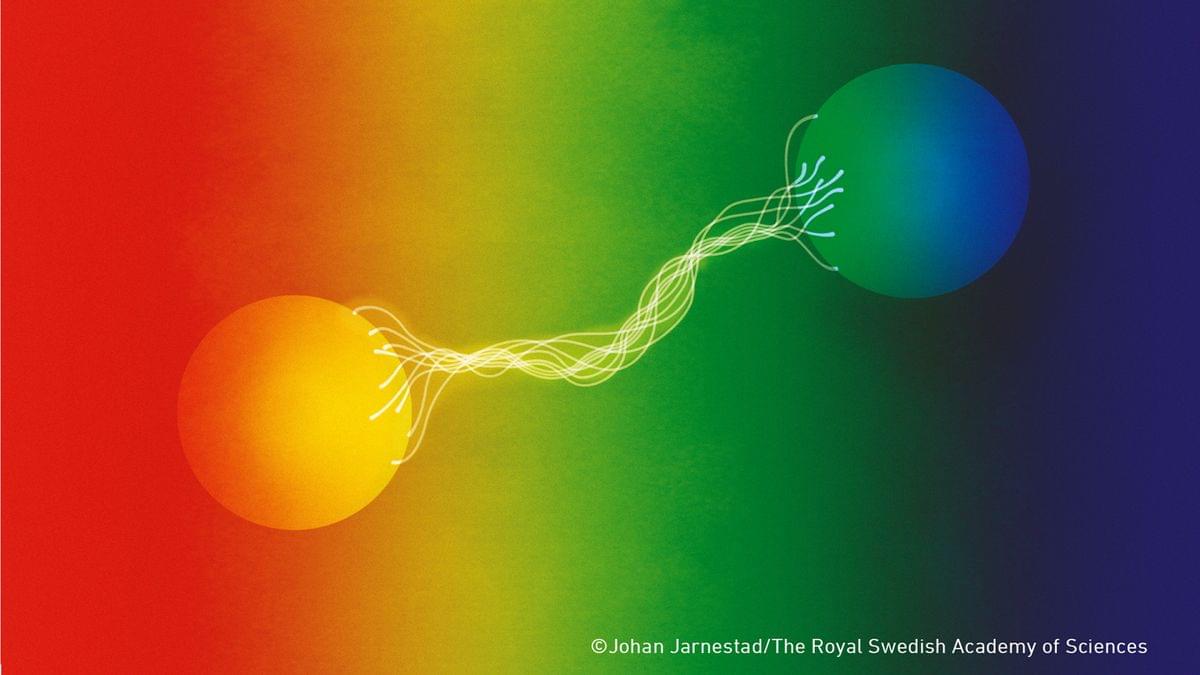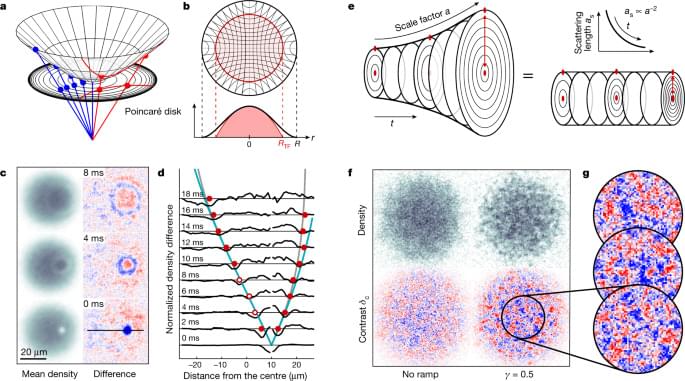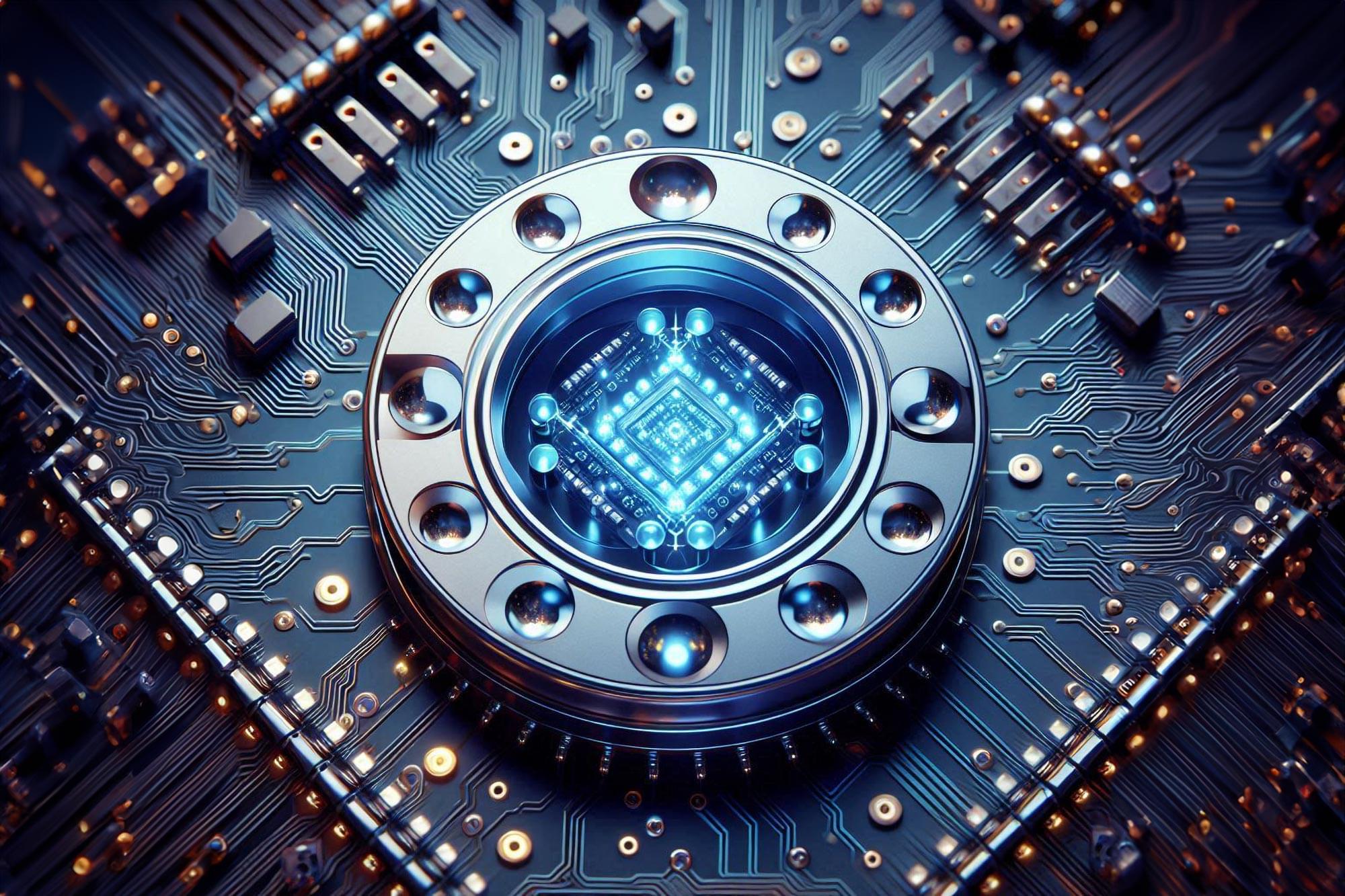AI has helped physicists discover a simpler way of achieving quantum entanglement. This finding could make it easier to develop quantum communication technologies.



Physicists have long attempted to find a single theory that unites quantum mechanics and general relativity.
This has been very tricky because quantum mechanics focuses on the unpredictable nature of particles at microscopic scales, whereas general relativity explains gravity as the curvature of spacetime caused by massive objects.
The two theories discuss forces existing on different scales. Bianconi employed an interesting approach to deal with this challenge. She proposes an entropic action where, instead of being a fixed background, spacetime works like a quantum operator — acting on quantum states and deciding how they change over time.



About 100 trillion neutrinos are passing through your body at this very second. The particles are the second most abundant form of matter in the universe (behind light), but they interact very, very rarely. That property makes them ideal objects for studying the fundamentals of quantum mechanics; however, it also complicates measurements.
For example, neutrinos were discovered in the 1950s, but their properties are still obscure. New research, published in Nature by a team including Lawrence Livermore National Laboratory (LLNL) scientists, introduces an experimental technique to constrain the size of the neutrino’s wavepacket.
Imagine measuring a neutrino like finding a needle in a haystack. The particles are so elusive that, previously, researchers didn’t even know where on Earth the haystack was located. Now, they’ve identified the haystack, or, scientifically, the size of the neutrino’s “wavepacket.” This measurement doesn’t say exactly where the neutrino is located or how big it is, but it does constrain what those answers could be.
“Information and the Nature of Reality: From Physics To Metaphysics” by Paul Davies and Niels Henrik Gregersen Book Link: https://amzn.to/41GMVl6 (Affiliate link: If you use this link to buy something, I may earn a commission at no extra cost to you.) Playlist: • Two AI’s Discuss: The Quantum Physics… This collection of essays, “Information and the Nature of Reality,” explores the evolving role of information from physics to metaphysics. It examines how the concept of matter has shifted historically, particularly with advances in quantum physics, and considers materialism’s limitations as a worldview. The texts propose that information may be as fundamental as matter and energy in understanding the universe, investigating its influence on biology, consciousness, and computation. Several contributions consider the theological implications, pondering God as an ultimate source of information and discussing the relationship between divine action and natural processes. Ultimately, the text argues for interdisciplinary dialogue between science, philosophy, and theology to form an adequate theory of the natural world. • Paul Davies and Niels Henrik Gregersen in the introduction introduce the central question of whether information matters in understanding reality, setting the stage for the book’s interdisciplinary exploration. • Ernan McMullin traces the historical evolution of the concept of matter in philosophy and its relationship to physics in his essay. • Philip Clayton in his contribution, Unsolved dilemmas: the concept of matter in the history of philosophy and in contemporary physics, explores the persistent challenges and transformations in understanding matter across philosophical history and modern physics. • Paul Davies in Universe from bit discusses the idea that the universe may fundamentally be based on information. • Seth Lloyd in The computational universe presents the concept of the universe as a vast quantum computer. • Henry Stapp in Minds and values in the quantum universe examines the role of consciousness and values within the framework of quantum mechanics. • John Maynard Smith in The concept of information in biology investigates the application and implications of information concepts within biological systems, particularly in genetics and evolution. • Terrence W. Deacon in What is missing from theories of information? argues that the crucial aspect of information is its inherent reference to something absent. • Bernd-Olaf Küppers in Information and communication in living matter explores the semantic dimensions of information and its fundamental role in biological processes. • Jesper Hoffmeyer in Semiotic freedom: an emerging force proposes a biosemiotic perspective, emphasizing the importance of signs and interpretation in understanding life. • Holmes Rolston, III in Care on Earth: generating informed concern examines the evolutionary basis and significance of caring and concern in the natural world. • Arthur Peacocke in The sciences of complexity: a new theological resource? explores how the sciences of complexity can offer new insights for theological understanding. • Keith Ward in God as the ultimate informational principle posits that God can be understood as the fundamental source and sustainer of information in the universe. • John F. Haught in Information, theology, and the universe explores the relationship between information, theology, and our understanding of the cosmos. • Niels Henrik Gregersen in God, matter, and information: towards a Stoicizing Logos Christology proposes a theological framework that integrates the concepts of God, matter, and information, drawing on Stoic philosophy and Christian theology. #InformationReality #PhysicsMetaphysics #NatureOfReality #QuantumInformation #BiologicalInformation #PhilosophyOfScience #ScienceAndTheology #CosmicInformation #OriginOfLife #UltimateReality #MeaningOfInformation #ComplexSystems #HistoryOfScience #Interdisciplinary #SciencePhilosophy #deepdive #skeptic #podcast #synopsis #books #bookreview #ai #artificialintelligence #booktube #aigenerated #history #alternativehistory #aideepdive #ancientmysteries #hiddenhistory #futurism #videoessay
Is our universe still evolving? Could it be a Baby Universe, part of an endless cycle of cosmic creation and destruction? In this episode, we explore the Hourglass Universe Theory, the possibility of an Anti-Universe, and whether cosmic balance was disrupted by a universal force.
📺 Watch the full video here: 👉 • From Creation to Duality: The Mystery… ](• From Creation to Duality: The Mystery…
Join us as we uncover the scientific mysteries of the cosmos, linking quantum physics, mythology, and cosmology to explore the hidden nature of reality. 🌠✨
🎧 Subscribe to Beyond Truth and journey beyond the limits of knowledge!
Please note: The information shared on this channel does not claim to be absolute truth or supported by scientific evidence. It represents the author’s vision and serves as one of many alternative theories. You are free to believe in it—or not—depending on how closely it resonates with you.
Our goal is to foster open-minded exploration while respecting all individuals. We aim to discuss topics freely, including religious, philosophical, and universal themes, without violating laws or causing offense to anyone’s emotions, religious beliefs, ethnic identity, or gender.

There is a peculiar alchemy woven into the very structure of spacetime, an unseen flux of quantum fluctuations from which the most ephemeral of entities — virtual particle-antiparticle pairs — bubble in and out of existence. The vacuum, so named for its ostensible emptiness, is anything but void. It seethes with quantum activity, a perpetual genesis and annihilation of matter and antimatter that, if properly harnessed, could redefine the very foundations of energy production. Here, we propose a speculative yet theoretically plausible mechanism by which this ceaseless quantum froth might be coerced into yielding usable energy — energy on a scale that would render conventional sources mere curiosities of an earlier epoch.
The quantum vacuum is not merely an absence of matter but rather a dynamical system governed by Heisenberg’s uncertainty principle, where transient pairs of particles emerge momentarily before annihilating back into the void. This effect, first mathematically formalized in quantum electrodynamics (QED) by Dirac (1930), finds experimental validation in phenomena such as the Casimir effect, where vacuum fluctuations exert measurable forces between conductive plates (Lamoreaux, 1997, p. 57). If such fluctuations can manifest macroscopically, might they not be engineered into a usable power source?
One tantalizing possibility arises from artificially stabilizing these virtual particles long enough to force matter-antimatter interactions within a controlled environment. Conventional particle-antiparticle annihilation is known to release energy per Einstein’s mass-energy equivalence relation (E=mc²), a principle routinely exploited in positron emission tomography (PET) but never yet on an industrial scale. The key challenge lies in capturing these spontaneous virtual entities before they dissolve, a feat requiring an unprecedented interplay of quantum field manipulation and high-energy containment systems.

A new quantum computing breakthrough has sent shockwaves through the tech world. Researchers at USTC unveiled Zuchongzhi-3, a 105-qubit machine that processes calculations at speeds that dwarf even the most powerful supercomputers. It marks another leap forward in the quest for quantum supremacy, with the team demonstrating computational power orders of magnitude beyond Google’s latest results.
